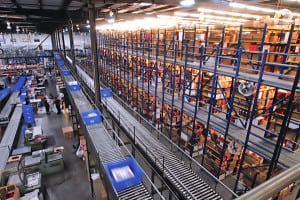Recently I was working on an acquisition due diligence project for an omnichannel client. My part of the assignment was to address the company’s systems and technology strategy for IT and ecommerce; assess risks the business systems may pose; make recommendations to mitigate risk; and identify capital expenditures needed, if the company is acquired.
The company has sales of $50 million from multiple B2C websites and wholesale to a number of major big-box retailers. From an ecommerce perspective, it successfully uses a hosted solution and pays $240,000 annually for routine support, with a small development team provided by the vendor. Internally the company has 12 ecommerce professionals (payroll over $600,000) maintaining the content, applying SEO and SEM marketing tactics and strategies. They also pay a hefty sum for subscription services and add-ons for website licenses, reviews and product information management.
From an IT perspective, the target company has a totally different situation. Its ERP system and several major applications have been “sunsetted” and thus not upgraded since 2010. Three staffers maintain the IT infrastructure and network and support for 120 employees on use of the “green screen” ERP system, writing reports and analysis off system in Excel. An outside contract programmer handles mission-critical problems if needed within the old ERP software.
No, this isn’t a contrived illustration – it’s from real life. Many companies have radically different IT and ecommerce strategies. In past decades IBM AS400, iSeries and HP 3000 were workhorses for this industry, but newer client-server and SQL-based technologies, as well as cloud and hosted solutions, have rendered them obsolete. From a software perspective, many providers no long support application systems in the catalog, retail and ecommerce space.
To be frank, core ERP and OMS systems don’t get the same ongoing budget support that ecommerce does in many companies. Yet ERP dramatically affects productivity across critical areas like call center, fulfillment, accounting and merchandising. Marketing departments often use outside services rather than being confined to outdated ERP and OMS systems. Even telephone systems have adapted cloud and VOIP technology.
It’s time to stop and assess your strategies, looking at current state and where you need to migrate to. To that end, here are 6 major factors to consider as you evaluate your systems and ecommerce technology strategy:
Assess your current direction
After considering the above scenarios you may say “the horse is out of the barn” as ecommerce, marketing and call center have already adopted best-of-breed systems and technology approaches. Some IT managers may wish to bring the user community back into a single system, which is the best direction in certain cases. I’m not saying that however. First, identify your major application systems and databases. What are their strengths and weaknesses? Who are the major users? What is the annual cost? Which are candidates for replacement? Where does the present strategy take your company?
Align with your strategic growth plan
What are the application functions you need to grow and manage your business by department? How well do your applications support the company’s strategic sales plan?
Identify major company data resources
In the step above, what is the value of the independent databases to other decision makers? How can the data resources be shared or will they always be siloed? Can a business intelligence system bridge this chasm? Best of breed may be what you want to keep, but how can you maximize your data use?
Keep in step with your technology strategy
What is your overall technology strategy for either building new systems or acquiring best-of-breed applications? Without chasing technology as an early adopter, how well will your current technology direction serve your company? Are there standards you need to adopt to avoid being trapped by technology?
What key employees can maximize your strategy?
Identify the skill sets for key employees to help you get more out of your current systems. We find that companies often only use 30% of the functionality of an acquired system. Go back and address each system. What else would bring benefit? What additional training is needed? In the above example, three people trying to support 120 employees on dated applications won’t cut it.
Perform risk analysis
What risks does your system and technology strategy pose? What steps can you take to mitigate them, and at what costs? In our above example, replacing the sunsetted ERP, getting on vendor support and not being dependent on three people may seem obvious. But the price tag for replacing the system is more than $750,000 plus annual support.
Assessing your technology strategy from these five perspectives will generate more criteria to be considered, including privacy policies and data security. Defining a strategic direction that is in line with your growth plans will prove profitable while reducing risk.
Curt Barry is Founder & Partner of F. Curtis Barry & Company

